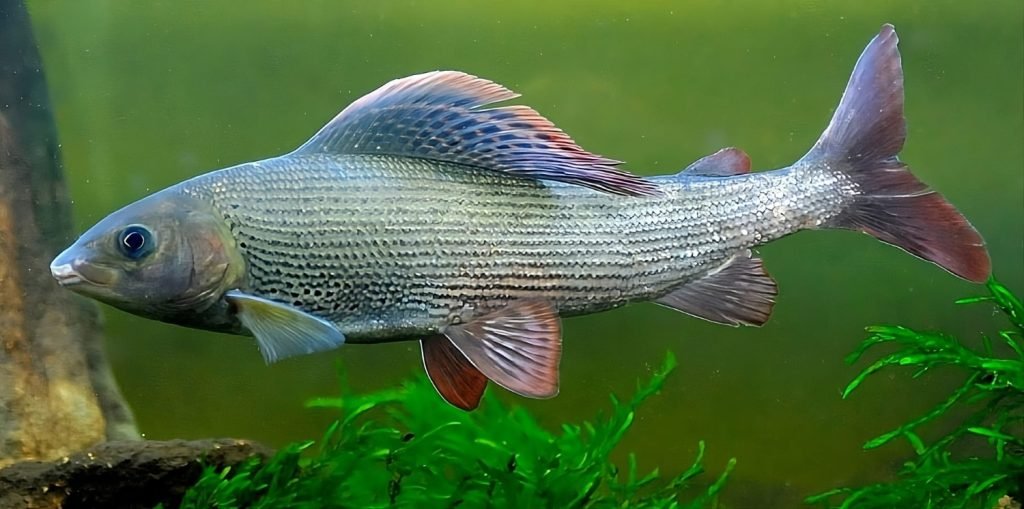Fish feel pain
The question of whether fish feel pain is a controversial topic and continues to be the subject of study and debate in the scientific community. Fish are vertebrate animals endowed with a nervous system that includes pain receptors called nociceptors. However, the ability to sense and process pain in fish is complex and differs from that of mammals and birds.

Insights into the Scientific Debate on Fish Pain
- Scientific studies have shown that fish respond to aversive stimuli, such as physical harm, and may exhibit defensive and avoidant behavior in threatening situations. Evidence suggests that fish are capable of feeling stress, discomfort, and certain forms of pain.
However, the interpretation of these behavioral responses in relation to the subjective experience of pain in fish remains a matter of debate. Some researchers argue that the responses observed in fish are automatic and reflexive reactions, with no conscious experience of pain, while others advocate the idea that fish possess a primitive form of pain sensitivity.
Ethics and Welfare in Sport Fishing
- Regardless of the scientific debate, many sportfishing rules and practices have been geared toward minimizing the potential suffering of fish. The practice of catch-and-release, for example, aims to reduce stress and harm to fish by releasing them back into the water with minimal damage.
Although the scientific evidence on the ability of fish to feel pain is complex, it is important to consider ethics and animal welfare in all human activities involving fish. Adopting responsible fishing practices, minimizing handling time and carefully returning caught fish to the water are measures that show respect for aquatic life and contribute to the preservation of ecosystems. In addition, further research is needed to better understand the pain sensitivity of fish and to determine the best management and conservation practices for these animals.
What living thing does not feel pain?

The differences between which living beings can feel pain and which cannot are complex and continue to be the subject of scientific study. It is currently believed that the ability to feel pain is related to the presence of a nervous system, especially nociceptors, which are the receptors responsible for detecting noxious stimuli and transmitting pain signals to the brain.
From this perspective, it is possible that simpler animals, such as insects, which have less complex nervous systems, do not have the capacity to feel pain in the same way as more developed animals, such as mammals and birds. However, even among the simplest animals, it is still not entirely clear whether there is a subjective experience of pain or only automatic reactions to aversive stimuli.
Instead, mammals, birds and other animals with more developed nervous systems are thought to be capable of feeling pain. This includes domestic animals, farm animals, wild animals and also fish.
The Enigma of Plants: Can They Feel Pain?
- When it comes to plants and other simpler living things, the question is even more complex. Although plants do not have a nervous system like animals, they are able to detect and respond to environmental stimuli such as light, gravity, touch and chemical changes. However, there is no scientific consensus on whether these responses indicate that plants may have some form of pain sensation or perception.
In summary, the ability to feel pain is a complex biological aspect and varies among different groups of living things. While animals with developed nervous systems, such as mammals and birds, are generally considered to be capable of feeling pain, there are still debates and gaps in knowledge regarding other living things, such as simpler animals and plants. Science continues to investigate this question and to expand our understanding of pain sensitivity in different organisms.
Which fish feel pain?

Whether fish are capable of feeling pain is still an airtight subject that science continues to study. Fish are vertebrate animals endowed with a nervous system that includes nociceptors, pain receptors, which allow them to respond to aversive stimuli and perceive physical injury. However, the exact ability of fish to feel pain and the extent of this experience remain controversial.
Some fish species have more highly developed nervous systems than others. Cartilaginous fish, such as sharks and rays, have relatively large brains and more complex nervous systems than smaller bony fish. Therefore, these species are more likely to feel pain to some extent.
Signs of Discomfort: Debate on the Experience of Pain in Fishes
- Scientific studies suggest that fish exhibit behaviors and physiological responses when subjected to noxious stimuli, indicating that they may experience stress and discomfort in certain situations. However, the interpretation of these behavioral responses as a subjective experience of pain remains a matter of debate.
Fish that are targeted for sport and commercial fishing, such as salmon, trout, bass, tuna and many other species, are considered to be animals capable of feeling pain. It is therefore important that fishermen adopt responsible fishing practices, such as catch and release, to reduce stress and harm to the fish they catch.
Legislation Under Debate: Recognizing Fish Pain
- Despite the controversies, some countries and jurisdictions have already begun to consider the possibility that fish can feel pain by enacting laws and regulations that seek to ensure the ethical treatment of animals during fishing and other contexts.
In summary, the ability of fish to feel pain is not yet fully understood and may vary among species. Science continues to research and explore this issue to expand our knowledge of fish pain sensitivity and to provide ethical and sustainable guidelines regarding fishing and the treatment of these animals. In the meantime, it is important to consider the welfare of fish during fishing and to adopt practices that minimize the stress and suffering of these animals.





